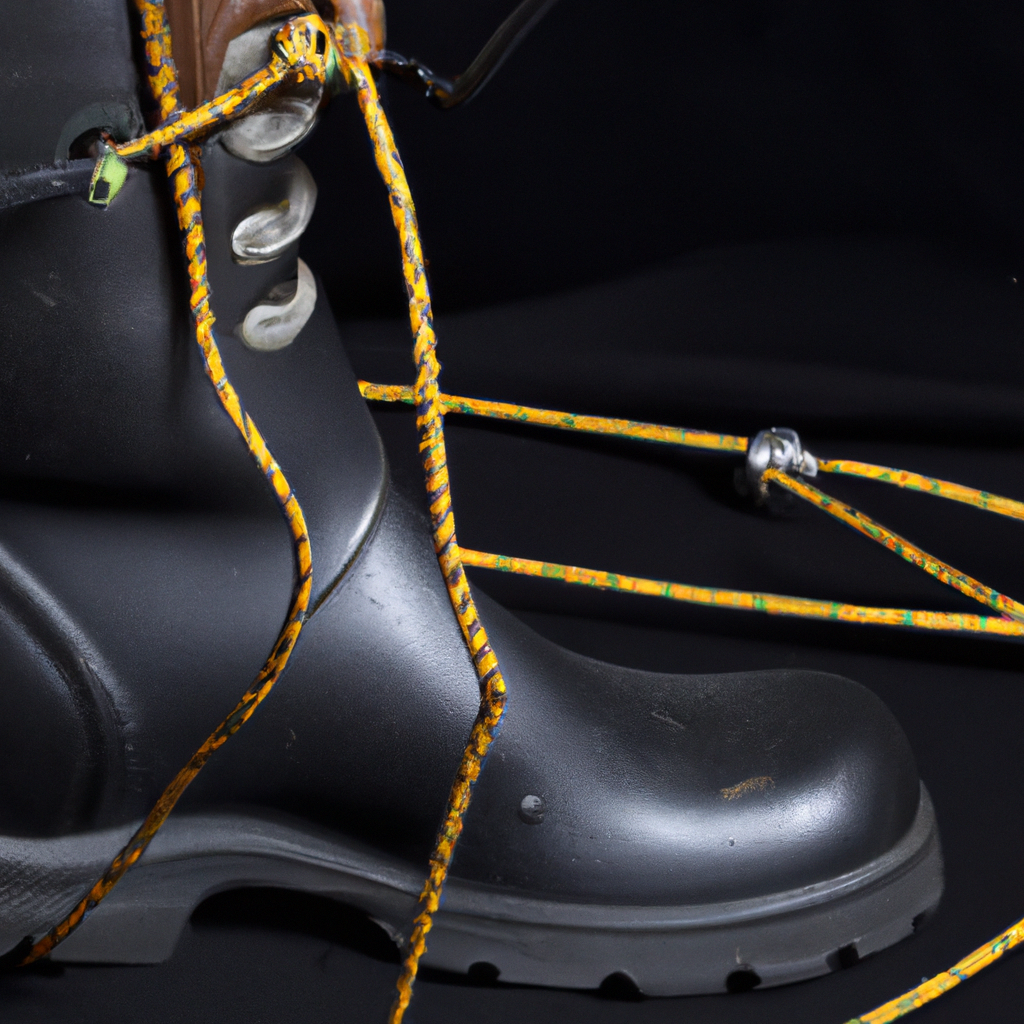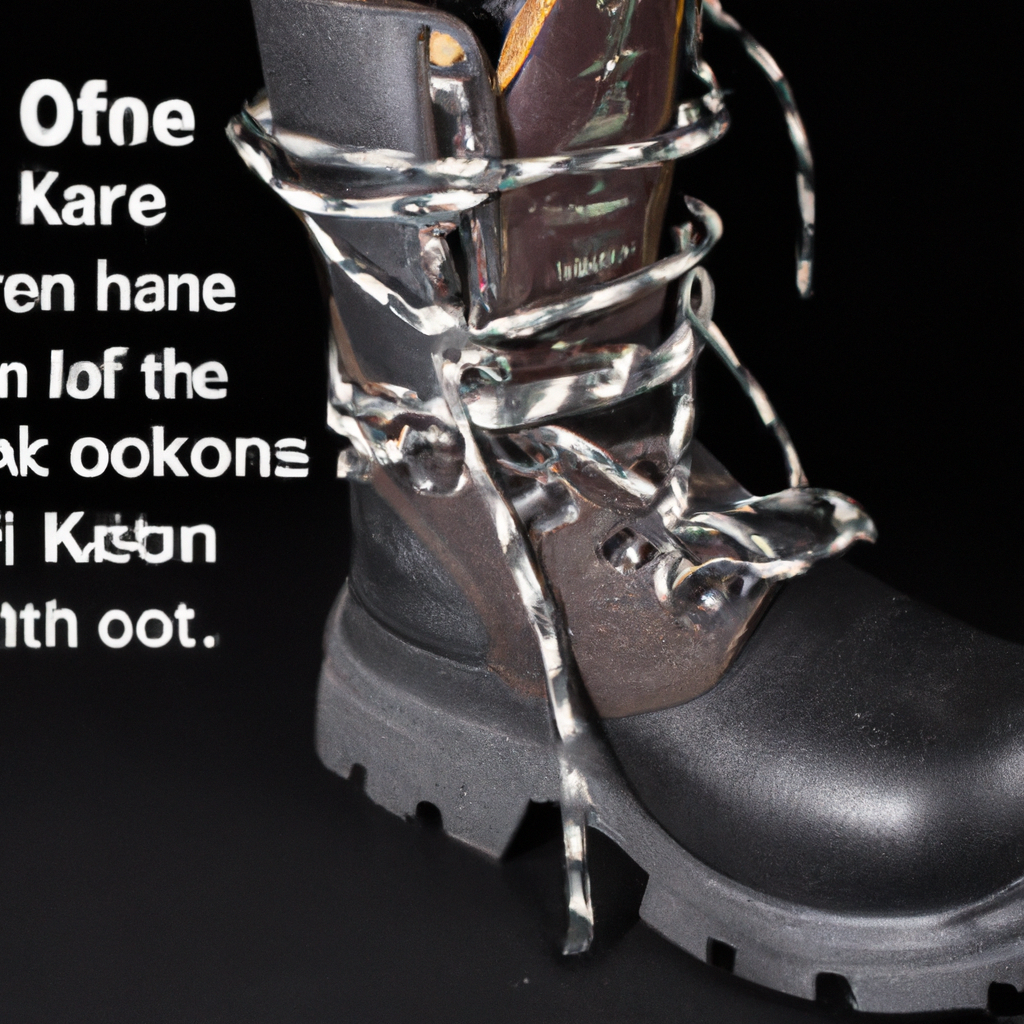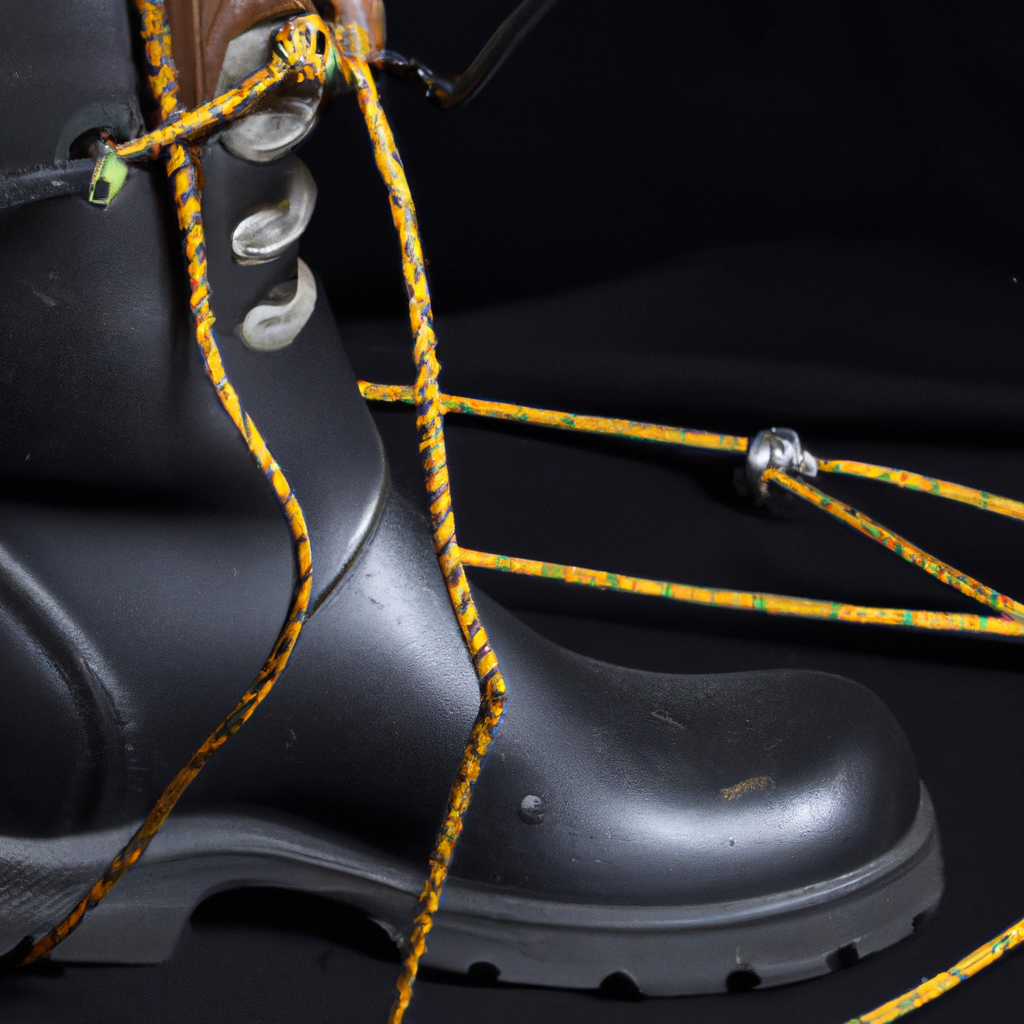Have you ever wondered what exactly a lineman shank in boots is? Well, it’s time to satisfy your curiosity! In this article, we will unravel the mystery behind this intriguing footwear feature and shed light on its purpose. From its history to its function, we’ll explore everything you need to know about the lineman shank in boots. So, get ready to step into the world of footwear knowledge, and discover the secrets of this essential component that ensures both comfort and stability in your favorite pair of boots.

Understanding the Purpose of a Lineman Shank in Boots
If you work in the electrical line industry, you are likely familiar with the importance of wearing the right kind of boots to ensure your safety and comfort while on the job. One key component of lineman boots is the shank, which plays a vital role in providing support, stability, and protection to your feet and lower legs. In this article, we will explore what exactly a lineman shank is, why it is important, and the different types of shanks commonly found in lineman boots.
What is a Lineman Shank in Boots?
Before we can understand the importance of a lineman shank, it is helpful to know what it actually is. The shank refers to a stiff piece of material that is inserted into the sole of the boot between the insole and outsole. Its primary function is to provide structural support and stability to the boot, especially in the arch and heel areas. Lineman boots are specifically designed with a shank to ensure that they can withstand the unique challenges faced by electrical line workers.
Importance of Lineman Boots in Electrical Line Work
Safety and Protection
One of the most vital aspects of lineman boots is their ability to provide safety and protection to electrical line workers. The shank contributes significantly to this aspect by preventing injuries. When working with heavy equipment or climbing poles, there is always a risk of objects falling on your feet. The rigid structure of the shank helps to distribute the impact force and reduce the risk of fractures or other foot injuries.
Enhanced Stability and Support
Another crucial benefit of a lineman shank is the enhanced stability and support it provides. Climbing poles, working on uneven terrain, and navigating slippery surfaces are all common in electrical line work. A strong and sturdy shank helps to stabilize your foot and ankle, reducing the chances of twisting or spraining them. The shank also offers support during prolonged periods of standing, minimizing fatigue and discomfort.
Improved Arch Support
Arch support is essential for maintaining proper alignment of your feet and preventing excessive strain on the arches. The presence of a shank in lineman boots helps distribute the weight evenly across your foot, providing excellent arch support. This feature is particularly important in line work, which often involves long hours of standing or walking on uneven surfaces.
Reduced Fatigue and Joint Pain
Electric line workers often have physically demanding jobs, which can lead to fatigue and joint pain. The shank in lineman boots plays a crucial role in reducing these issues by providing additional support and stability to your feet and ankles. By absorbing some of the forces exerted on your feet during strenuous activities, the shank helps to minimize fatigue and alleviate strain on your joints, resulting in reduced discomfort and pain.
Impact Resistance
Working in the electrical line industry exposes you to various hazards, including falling objects and potential impact injuries. The shank in lineman boots adds an extra layer of protection by absorbing the impact and dispersing the force throughout the sole of the boot. This feature helps to minimize the risk of injuries caused by impact, such as bruising or fractures.
Structure and Composition of a Lineman Boot Shank
Definition and Function of a Shank
The shank in lineman boots is a rigid structure that is placed between the insole and outsole of the boot. It typically runs from the heel to the arch area and provides structural integrity to the boot. The main function of the shank is to support the foot and prevent the sole of the boot from bending excessively, especially in the arch area. By limiting excessive flexing, the shank helps to maintain the shape of the footbed and provides stability during various activities.
Materials Used in Lineman Shanks
Different materials can be used to construct lineman shanks, each with its own set of characteristics and benefits. The most common materials used in lineman shanks are steel and composite. Steel shanks offer exceptional strength and durability, while composite shanks provide flexibility and electrical resistance. The choice of material often depends on the specific needs and preferences of the individual lineman.
Placement and Design of the Shank
The placement and design of the shank in lineman boots are carefully considered to ensure optimal performance. The shank is typically placed between multiple layers of the boot’s construction, such as the insole, midsole, and outsole. This positioning allows the shank to provide support and stability without compromising the overall comfort of the boot. Additionally, the design of the shank is engineered to match the natural contours of the foot and provide the necessary arch support and rigidity.

Types of Lineman Shank Designs
Steel Shank
Steel shanks are the traditional choice for lineman boots due to their strength and durability. These shanks are made of solid steel and offer excellent protection against impact hazards. They are highly resistant to bending and flexing, providing maximum support and stability to the foot. However, steel shanks can be heavier and less flexible compared to other materials, potentially causing some discomfort during extended periods of use.
Composite Shank
Composite shanks are becoming increasingly popular in lineman boots due to their lightweight design and electrical resistance properties. These shanks are made from a blend of materials such as fiberglass, carbon fiber, or Kevlar, which offer excellent flexibility and insulation. Composite shanks provide stability and support while minimizing fatigue and allowing for greater freedom of movement. They are also ideal for workers who need to comply with electrical safety regulations or work in environments with a higher risk of electrical hazards.
Hybrid Shank
In recent years, boot manufacturers have introduced hybrid shank designs that combine the benefits of both steel and composite shanks. These shanks typically feature a steel core for strength and durability, surrounded by composite materials for enhanced flexibility and electrical resistance. Hybrid shanks aim to provide the best of both worlds, offering excellent support, protection, and comfort for lineman boots.
Steel Shank in Lineman Boots
Strength and Durability
Steel shanks are renowned for their outstanding strength and durability. Constructed from solid steel, these shanks can withstand heavy loads and provide exceptional support to the feet and lower legs. Steel shanks excel in high-impact environments, offering reliable protection against various hazards commonly encountered in electrical line work.
Weight and Flexibility
One potential drawback of steel shanks is their weight and limited flexibility. The rigid nature of steel restricts the movement of the foot to some extent, which may cause discomfort during prolonged use. However, advancements in technology and boot design have led to the development of lighter and more flexible steel shanks, addressing these concerns and providing a better overall user experience.
Impact and Puncture Resistance
Steel shanks provide excellent protection against impact and puncture hazards. Whether you’re working with heavy equipment or stepping on sharp objects, the solid steel construction of the shank acts as a barrier, minimizing the risk of injuries to your feet. Additionally, steel shanks are highly resistant to puncture, reducing the chances of nails or other sharp objects penetrating the sole of the boot and causing harm.
Composite Shank in Lineman Boots
Lightweight Design
One of the standout features of composite shanks is their lightweight design. Made from materials such as fiberglass or carbon fiber, these shanks offer excellent support and stability without adding unnecessary bulk to the boot. The reduced weight of the boot translates to less fatigue and greater comfort during long workdays, allowing you to focus on the task at hand.
Electrical Resistance
Composite shanks are inherently non-conductive, making them an ideal choice for electrical line work. The combination of fiberglass, carbon fiber, or other composite materials offers excellent electrical resistance, reducing the risk of electric shock or electrocution. This feature is particularly important when working near live wires or in environments with a high potential for electrical accidents.
Flexibility and Comfort
One of the main advantages of composite shanks is their flexibility and comfort. Unlike steel shanks, composite shanks allow for more natural movement of the foot, providing a greater range of motion and enhancing overall comfort. The flexibility of composite shanks also contributes to reducing muscle fatigue and foot strain, ensuring your feet remain comfortable during long shifts.
Hybrid Shank in Lineman Boots
Combining Strength and Flexibility
Hybrid shanks offer an optimal balance between strength and flexibility. By incorporating a steel core surrounded by composite materials, these shanks provide the necessary structural support and rigidity while allowing for a degree of flexibility. The steel core ensures maximum strength and stability, while the composite materials enhance comfort and allow for a more natural range of motion.
Balancing Weight and Support
Another advantage of hybrid shanks is their ability to balance weight and support. The steel core provides the necessary strength to withstand heavy loads and protect against impact hazards, while the composite materials help reduce the overall weight of the boot. This combination allows for a lighter boot without compromising the support and protection needed in electrical line work.
Versatility and Adaptability
Hybrid shanks offer versatility and adaptability to cater to the diverse needs of electrical line workers. The incorporation of both steel and composite materials allows for a customizable experience, where the boot can be tailored to individual preferences. This flexibility makes hybrid shanks a popular choice among linemen who require a balance between strength, flexibility, and overall comfort.
How Lineman Boot Shanks Enhance Safety
Preventing Foot and Ankle Injuries
Foot and ankle injuries are a common risk in electrical line work, but lineman boot shanks help to minimize these risks. The combination of support, stability, and impact resistance provided by the shank reduces the chances of sprains, strains, or fractures. By keeping your feet properly aligned and absorbing shock forces, the shank plays a significant role in keeping you safe on the job.
Reducing the Risk of Falls and Slips
Slips and falls can be dangerous, especially when you’re working at heights or in hazardous environments. Lineman boot shanks enhance safety by improving traction and stability, reducing the risk of slips and falls. The added grip and support provided by the shank allow you to maintain a sturdy footing, even on slippery or uneven surfaces, giving you the confidence to perform your job effectively and safely.
Enhancing Stability on Uneven Surfaces
Electrical line work often involves navigating uneven terrain, such as rough ground or construction sites. Lineman boot shanks are designed to provide stability and support on these challenging surfaces. The rigidity of the shank helps to distribute your weight evenly and maintain balance, minimizing the risk of stumbling or tripping over obstacles. This stability is crucial for maintaining control and ensuring your safety while on the job.
Protecting against Electrical Hazards
Electrical safety is of utmost importance in the line work industry, and lineman boot shanks play a vital role in protecting against electrical hazards. Composite shanks, in particular, provide excellent electrical resistance, reducing the risk of electric shock or electrocution. By isolating your feet from electrical currents, the shank acts as a barrier, safeguarding you from potentially life-threatening incidents.
Caring for Lineman Boots with Shanks
Cleaning and Maintenance
Proper cleaning and maintenance of your lineman boots are essential for ensuring their longevity and performance. When cleaning boots with shanks, it is important to follow the manufacturer’s instructions. Use a soft brush or cloth to remove dirt and debris from the boots, paying attention to the areas around the shank. Avoid using harsh chemicals or abrasive cleaners that can potentially damage the shank or other components of the boot.
Inspecting for Damage
Regularly inspecting your lineman boots for any signs of damage is crucial for maintaining their effectiveness and safety. Check the shank for cracks, bends, or other forms of damage that may affect its structural integrity. If you notice any issues, it is advisable to consult with the manufacturer or a professional to determine the best course of action, which may involve repairing or replacing the shank.
Replacing Worn-out Shanks
Over time, the shank in your lineman boots may become worn or lose its rigidity, potentially compromising its effectiveness. If you notice a decrease in support or stability, it may be an indication that the shank needs to be replaced. Most boot manufacturers offer replacement shanks specifically designed for their boots. Ensure you select the correct size and type of shank to maintain the performance and safety of your lineman boots.




